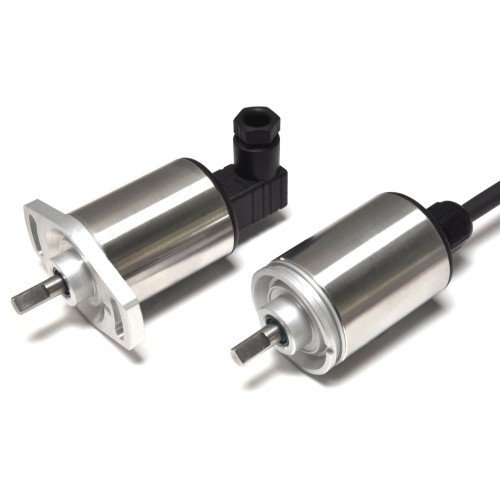CSA rated rotary sensor for oil and gas applications

CSA rated rotary sensor for oil and gas applications
Intrinsically safe G500 is CSA approved for use in potentially explosive gas/vapour atmospheres. The G500 is designed for industrial and scientific feedback applications and is ideal for OEMs seeking good sensor performance for arduous applications in hazardous areas.
The G500, like all Positek® sensors, is supplied with the output calibrated to the angle required by the customer, between 16 and 160 degrees and with full EMC protection built in. The sensor provides a linear output proportional with angle of rotation. There is a machined registration mark to identify the calibrated mid point.
Overall performance, repeatability and stability are outstanding over a wide temperature range. The G500 has long service life and environmental resistance with a rugged stainless steel body and shaft. The flange or servo mounting options make the sensor easy to install, it also offers a range of mechanical options. Environmental sealing is to IP65 or IP67 depending on selected cable or connector options.
Positek intrinsically safe sensors are designed to be used with a galvanically isolated amplifier . Approved galvanic isolation amplifiers (G005) are available from Positek; there is a choice of 0.5-9.5V or 4-20mA transmission outputs.
The sensor can be installed with a cable length up to 1km between the sensor and the amplifier.
Get a detailed view of our products, including their features, specifications, and available models. Find the perfect solution for your needs.

Our product offers a range of advanced features and benefits that set it apart from the competition. With cutting-edge technology and exceptional performance, it delivers unparalleled value to our customers.

Experience improved productivity and precision with our product’s state-of-the-art capabilities.

Simplify complex tasks and optimize workflow with our product’s intuitive design.

Count on our product for long-lasting reliability and consistent performance in any environment.
Find answers to common questions about our products and services.

The service provided by Everight was exceptional. They helped us find the perfect sensor for our application and their expertise was invaluable.


The service provided by Everight was exceptional. They helped us find the perfect sensor for our application and their expertise was invaluable.


The service provided by Everight was exceptional. They helped us find the perfect sensor for our application and their expertise was invaluable.

Fill out the form below to request more information
"*" indicates required fields
"*" indicates required fields